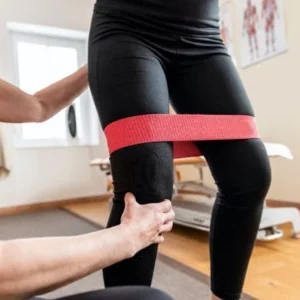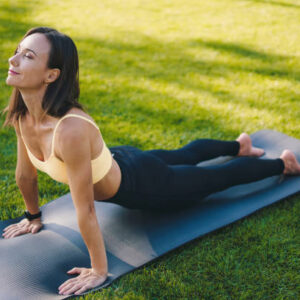Do You Know There Are Safe Exercises for Osteoarthritis?
When I first heard the word “osteoarthritis,” I thought it was something that only happened to elderly people who had lived long, busy lives. But then, someone close to me… a woman in her early 40s started complaining of persistent knee pain. She tried ignoring it, masking it with balms, and even limiting her activities. At first, she thought it was just fatigue or overuse, but eventually, she got diagnosed with osteoarthritis.
I remember watching her struggle between two worlds: the desire to stay active and the fear of making her pain worse. For months, she avoided exercise altogether, believing rest would heal her. Instead, her joints stiffened, and simple daily tasks became harder. It wasn’t until her doctor introduced her to safe exercises for osteoarthritis that everything began to change.
That’s the truth many people don’t hear enough: movement is medicine for osteoarthritis, but not just any movement. The right kind of safe, joint-friendly movement. In this guide, we’ll explore practical, gentle exercises that help relieve pain, improve flexibility, and restore confidence.
AFFILIATE DISCLOSURE: This post contains affiliate links. If you use these links to buy something, I may earn a commission at no extra cost to you. As an Amazon Associate, I earn from qualifying purchases.
Why Safe Exercises for Osteoarthritis Matter
If you’ve been diagnosed with osteoarthritis, one of the first instincts is to “slow down” or stop moving, thinking rest will prevent further damage. While rest is important in acute flare-ups, complete inactivity often makes things worse. Here’s why:
- Joint stiffness worsens with inactivity – Think of your joints like hinges on a door. If left unused, they become rusty. Gentle motion keeps them lubricated.
- Muscle support is critical – Strong muscles act like natural shock absorbers for your joints. Without them, your bones carry the full load.
- Better circulation reduces inflammation – Movement encourages blood flow, delivering nutrients to cartilage and tissues.
Research has consistently shown that people who stick to safe exercises for osteoarthritis experience less pain, improved function, and a better quality of life. Exercise won’t “cure” osteoarthritis, but it will help you manage it more effectively than medications alone.
How to Exercise Safely with Osteoarthritis
Not all exercises are created equal. While some may relieve stiffness and strengthen your body, others can strain joints and make symptoms worse. Here are guiding principles for keeping it safe:
- Low-Impact is Key – Choose exercises that minimize pounding on the joints (e.g., swimming instead of running).
- Consistency Over Intensity – It’s better to do 20 minutes daily than push yourself into pain once a week.
- Listen to Your Body – Mild discomfort is normal, but sharp pain is not. Stop when it hurts.
- Warm-Up Always – Gentle stretches or light walking for 5–10 minutes prepare your joints.
- Modify When Needed – Use props, resistance bands, or even chairs for balance and reduced strain.
Safe Exercises for Osteoarthritis: The Top Categories
Let’s break down the most effective, gentle, and safe exercises for osteoarthritis by type.
1. Range-of-Motion Exercises
These exercises keep your joints flexible and reduce stiffness.
- Shoulder rolls – Slowly roll your shoulders forward and backward.
- Ankle circles – Sitting down, lift your foot and rotate your ankle clockwise and counterclockwise.
- Gentle neck turns – Slowly turn your head from side to side.
These can be done daily, even multiple times a day, to keep stiffness away.
2. Strengthening Exercises
Building muscle is essential because muscles cushion and support joints.
- Mini squats (with chair support) – Stand behind a chair, lower your hips slightly, then return up.
- Resistance band leg presses – Sit on the floor, loop a band around your foot, and push outward.
- Wall push-ups – Stand facing a wall, place your hands on it, and push gently as if doing push-ups.
Start with 2–3 times a week, resting a day between sessions.
3. Aerobic (Cardio) Exercises
Cardio improves heart health and helps manage weight—crucial for reducing joint stress.
- Walking – Short, brisk walks on flat surfaces.
- Cycling – Stationary bikes are joint-friendly and effective.
- Swimming/Water aerobics – The buoyancy of water supports joints while allowing full movement.
Aim for 20–30 minutes, three to five times weekly.
4. Flexibility & Stretching Exercises
Flexibility prevents stiffness and improves mobility.
- Hamstring stretch – Sit on the edge of a chair, extend one leg forward, and lean slightly forward.
- Calf stretch – Stand facing a wall, place one foot forward, and gently stretch the back leg.
- Yoga or Pilates – Choose gentle styles designed for joint support.
5. Balance Exercises
Falls are a risk with osteoarthritis due to weak muscles and stiff joints. Balance training helps.
- Heel-to-toe walk – Place one foot directly in front of the other as if walking a tightrope.
- Single-leg stand – Hold onto a chair and lift one foot for a few seconds.
- Tai chi – A low-impact, flowing exercise proven to improve balance and reduce stiffness.
Tools That Make Exercising Easier with Osteoarthritis
Sometimes, the right tools can make exercise less painful and more sustainable. Here are some Amazon recommendations:
- Joint-Friendly Walking Shoes – Cushioning reduces impact on knees and hips.
- Resistance Bands Set – Versatile for strengthening without heavy weights.
- Yoga Mat with Extra Padding – Provides comfort for floor exercises.
- Stationary Bike for Home Use – Great for low-impact cardio at home.
- Knee Support Braces – Adds stability during movement.
Lifestyle Tips to Support Your Exercise Routine
- Stay hydrated – Joints need fluid for lubrication.
- Maintain a healthy weight – Every extra pound adds strain to knees and hips.
- Alternate activities – Mix swimming with walking to avoid overuse.
- Rest smartly – Rest is important, but avoid long periods of sitting still.
When to See a Doctor Before Exercising
- If you experience sharp, sudden pain that doesn’t ease with rest.
- If joints swell significantly after activity.
- If you notice instability or “locking” in your knees or hips.
A doctor or physiotherapist can create a personalized plan and ensure your exercises are safe.
Check out this article for better understanding of osteoarthritis
My Friend’s Story: How Safe Exercises Changed Everything
Remember the woman I mentioned earlier? At one point, she almost gave up hope of living pain-free. But she committed to a plan of safe exercises for osteoarthritis, starting with simple range-of-motion stretches. She moved on to water aerobics, then built up her strength with resistance bands.
At first, she doubted the process. “How can moving when it hurts help me?” she asked. But over time, she noticed:
- Less stiffness in the morning.
- Confidence to walk longer distances without fear.
- A return to activities she once loved.
Her transformation wasn’t overnight, but steady and real. Today, she’s living proof that safe exercises for osteoarthritis aren’t just theory… they work.
Conclusion: Taking Back Control
Osteoarthritis doesn’t mean giving up your independence or joy. It means learning to move differently, more intentionally, and more gently. The good news is that safe exercises for osteoarthritis are within your reach; no fancy equipment, no impossible routines, just consistent, mindful movement.
Whether it’s walking, stretching, swimming, or strengthening, the key is to keep moving safely. Each step, stretch, and gentle squat brings you closer to relief and renewed confidence.
Your journey with osteoarthritis can be more hopeful than painful. And sometimes, the smallest move forward is the most powerful.
FAQs About Safe Exercises for Osteoarthritis
1. Can exercise make osteoarthritis worse?
Not if done correctly. The wrong exercise can hurt, but safe, low-impact movements actually help protect your joints.
2. How often should I exercise with osteoarthritis?
Aim for at least 20–30 minutes of safe exercise most days, with rest when needed.
3. What’s the best exercise if I’m in pain?
Water aerobics, gentle walking, or stretching are usually the most joint-friendly.
4. Should I avoid squats if I have osteoarthritis?
Deep squats may be risky, but modified or chair-supported squats can strengthen muscles safely.
5. Can I still lift weights?
Yes, but choose lighter weights or resistance bands and focus on controlled movements.
6. Is yoga safe for osteoarthritis?
Yes, but stick to gentle or restorative yoga styles and avoid extreme poses.






